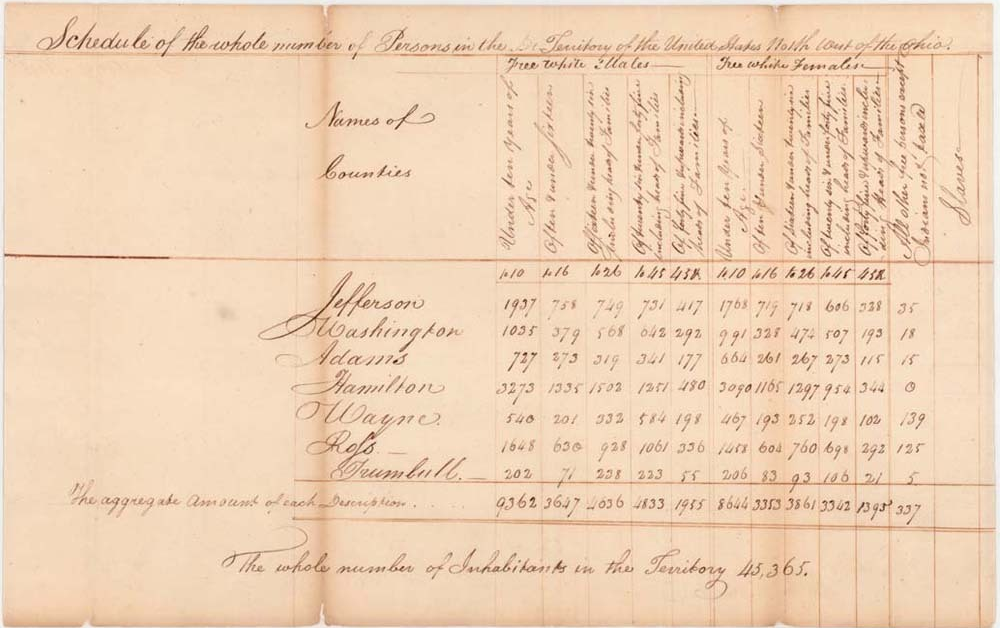Copyright pewresearch

From the very first census in 1790, the United States has measured race – but never in the same way and rarely without controversy. Categories such as “free white males,” “free white females,” “all other free persons” and “slaves” were included that year, reflecting the young nation’s politics and social hierarchies. As politics, policy, migration and attitudes about racial identity changed over time, so did the categories used in later counts. That makes the census both a mirror and a snapshot of how Americans see themselves – and how the government sees them. These categories are more than curiosities; they have real consequences for policy. Americans’ responses to census questions about race and ethnicity shape decisions that touch nearly every part of public life: from the drawing of congressional districts to the distribution of government resources and efforts to understand community differences. Yet today, Americans are divided on whether race should even be counted. Nearly half (46%) say the federal government should ask about it in its surveys, but one-third say it should not, according to a Pew Research Center survey conducted in June. Meanwhile, the Census Bureau is preparing to revise the questions again in 2030. The new format will combine race and Hispanic origin questions into a single item, and it will add a new category for Middle Eastern or North African identity. So far, the public is largely unaware that these changes are coming. This data essay explores how the U.S. decennial census has approached racial and ethnic measurement over the decades and how the U.S. public feels about the government collecting this information. How are race and ethnicity measured by the Census Bureau today? A brief history of how the U.S. decennial census has measured race and ethnicity Detailed table: Share of U.S. population for by race and Hispanic origin, 1790 census to 2020 census (Excel) What’s changing in the 2030 census The proposed 2030 census form combines the “Hispanic, Latino or Spanish origin” ethnicity question with the race question. That means the question about Hispanic ethnicity will appear as one option alongside racial groups. The proposed combined question also adds a distinct, new category for “Middle Eastern or North African” identity, which is currently grouped under the category “White.” These changes, when implemented, would bring the total number of major racial and ethnic categories to seven, with options for people to choose more than one group and instructions to write more detailed origins within each group. Alphabetically, these categories are: American Indian or Alaska Native Black or African American Hispanic or Latino Middle Eastern or North African Native Hawaiian or Pacific Islander The purpose of these updates is to produce more accurate race and ethnicity data. These proposed changes, part of “Statistical Policy Directive 15,” would also become the common standard when federal agencies collect race and ethnicity data. Some critics, however, argue these changes will lead to undercounts of some groups, such as Afro-Latinos. So far, the public is largely unaware of these proposed changes. About one-in-five U.S. adults say they have heard about them, according to the June Pew Research Center survey. Only 3% say they have heard a lot about the changes. Do Americans think federal surveys should ask about race? Although race and ethnicity have been a part of the country’s census for decades, Americans are divided on whether government should ask about race. Nearly half (46%) of U.S. adults support including race on federal surveys, while 33% oppose it and 21% are unsure if it should be asked about. By comparison, Americans express more support for asking about a person’s age (66%) or U.S. citizenship status (62%), while fewer support questions about ancestry, income or religion. (Of the items we asked about, religion and U.S. citizenship status are currently not included in the census, although the Trump administration is seeking to add a citizenship question to the next census.) Notably, support for collecting race data varies across groups: Race and ethnicity: About half of Asian (54%) and White (48%) adults say the federal government should ask about race, while 45% of Black and 40% of Hispanic adults say the same. Meanwhile, 37% of Black and 37% of Hispanic adults say the government should not ask about race, a higher share than among White (30%) or Asian (27%) adults. Political party: A higher share of Republicans and Republican-leaning independents than Democrats and Democratic leaners say race should be measured (52% vs. 43%). Gender: A higher share of men than women support asking the question (52% vs. 41%). Age: Adults under age 50 are more supportive than those 50 and older (52% vs. 40%). Education: Those with at least a bachelor’s degree are more likely than those without one to say race should be asked in government surveys (51% vs. 44%). When asked why they feel the way they do about collecting race data in federal surveys in an open-ended question, people offered a range of reasons. Here is what we heard. Why some Americans support the federal government collecting race data Among adults who support asking about race on federal surveys, the top reasons given for their views are: For demographic purposes (38%): Many cite general support for collecting data on race, saying it’s important “for statistical purposes” or “just to know the makeup of the country and how it is changing.” Documenting group differences (16%): Some see it as a way to highlight differences in experiences and views across racial and ethnic groups. Informing policy decisions (4%): A smaller share say data on race can inform government programs and decisions. Highlighting inequality (4%): Some say race data helps reveal racial discrimination and inequality. Reasons for supporting the government’s race data collection are cited at similar rates across racial and ethnic groups. Democrats and Republicans who support asking about race also largely align on their top two reasons. However, Democrats who support the idea are more likely than Republicans to cite two other reasons for their view: identifying racial inequality and discrimination (7% vs. 2%) and informing government policies and decisions (6% vs. 3%). Why some Americans oppose the federal government collecting race data Among adults who oppose collecting race in federal surveys, the top reasons given for their view are: Race is not important (26%): Some say race is “not relevant” or “shouldn’t matter” or ask, “Why does race matter?” All humans are equal (12%): Others say we are “all one race,” “all human” or “all Americans.” Privacy concerns (9%): Some say asking about race is “too personal,” “none of the government’s business” or “a private question.” Risk of discrimination (9%): Others worry that collecting race data leads to bias and discrimination. Among those who oppose the government collecting race data, Black adults (18%) are more likely than White adults (7%) to cite potential bias and discrimination. Democrats and Republicans opposed to the government counting race generally list similar reasons, though there are some differences. The top reasons listed by Democrats are that race is not important (22%), all humans are equal (12%), counting race leads to bias and discrimination (10%), data could be misused (9%), and they have privacy concerns (7%). Top reasons listed by Republicans are race is not important (32%), all humans are equal (14%), concerns about privacy (10%) and potential risk of discrimination (7%). Among those opposing race data collection, responses from the 9% of Democrats who express fears of data misuse were varied. One person said, “Because they are just trying to get information to deport people.” Said another, “Seeing how Trump weaponizes race, this is not something that can be considered in the same way it was before.” And a third said, “Based on principle, it can be weaponized as justification for demographic quotas.” Fewer than 1% of Republicans opposed to race data collection by the government expressed concerns about data misuse. Related: Refer to this related blog post for more information on the changing categories the U.S. Census Bureau has used to measure race and ethnic identities. Related: What Census Calls Us: Explore the different race, ethnicity and origin categories used in the U.S. decennial census, from the first one in 1790 to the latest count in 2020. Acknowledgments Pew Research Center is a subsidiary of The Pew Charitable Trusts, its primary funder. This was a collaborative effort based on the inputs and analysis of a number of people at Pew Research Center.



